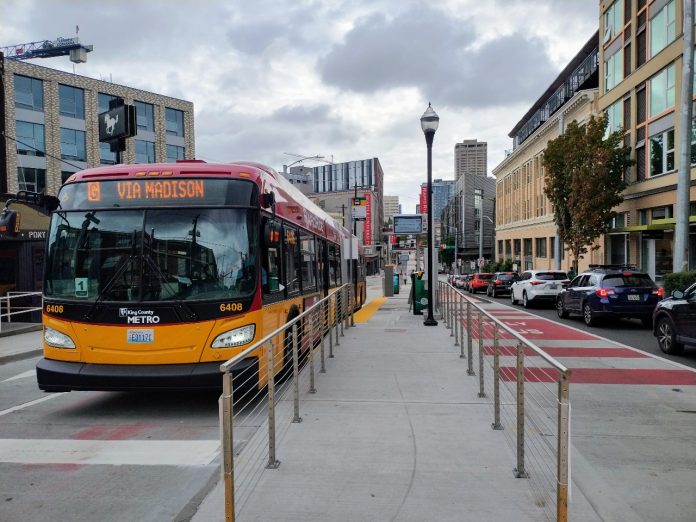
The launch of the RapidRide G Line on Saturday came with a whole slate of special challenges, leading to some snags and frustrations for riders in the first few days of service. King County Metro’s eighth RapidRide line is the most ambitious bus rapid transit project Seattle has undertaken to date. The line includes features that are wholly unique in Metro’s network, such as a brand new fleet of five-door diesel hybrid coaches and median island stops where passengers board and disembark from the left side of the bus.
With Metro promising six-minute service levels along Madison Street throughout most of the day, any delays at stations or at traffic signals means that buses start to bunch, with one bus arriving after the other. That bunching leads to gaps in service elsewhere, and unpredictable arrival times depending on when you get to a stop. While Metro tested coaches along Madison prior to launch and even constructed a demo bus island at its Ryerson bus base in SoDo, none of those conditions were a true match for the live operation of the route.
After a chaotic Monday morning with coaches running significantly off-schedule, conditions for G Line riders have stabilized somewhat as Metro continued to get a handle on maintaining stable headways on the route. While gaps in service have not disappeared, they have decreased as Metro deployed staff to the G Line’s terminal at MLK Jr Way S and E Madison Street.
According to Metro’s real-time data feed, around 11% of trips on the G Line were cancelled on the first day of service on Saturday, a number that had increased to 13% by Monday, the second day of six-minute service. But by Tuesday, that had improved to 7% and on Wednesday it was just 1%. Even with those cancellations, the G Line delivered more frequency than any other route on the system on all of those days, but the cancellations represent a rough gauge for how close Metro is getting to its promised service levels.
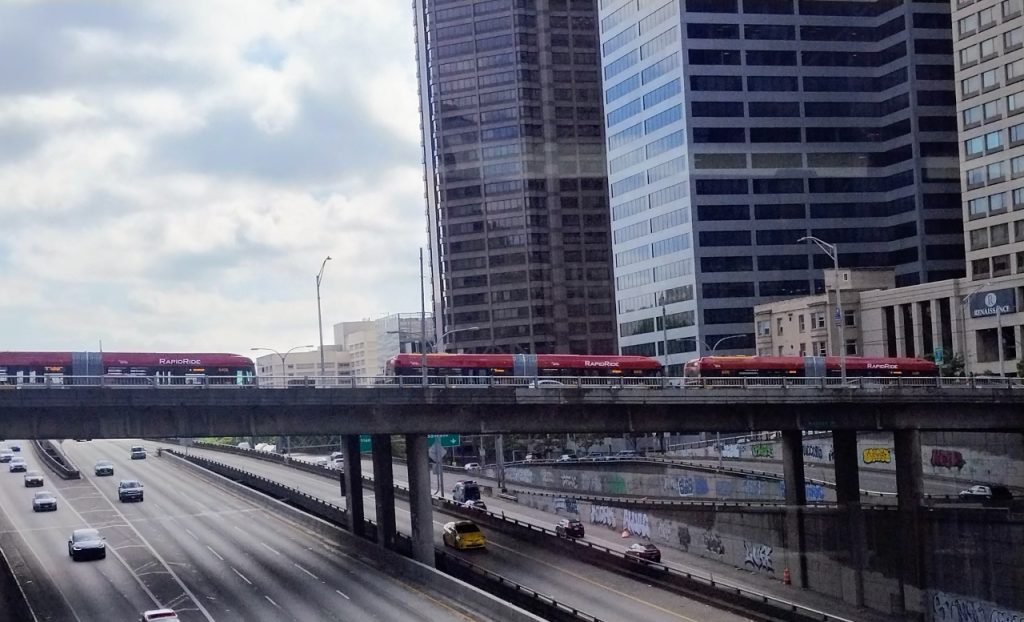
“Since the weekend, now into the first few days of the week, our Bus Operations division has been assigning first line supervisors to the layover terminal to help manage a lot of the sort of complex aspects of G Line service: fallbacks, namely,” Ian Kowalski, the G Line project’s planning lead, told The Urbanist. A fallback is an extra operator staffed to a bus on a route with very frequent service, so that when one operator needs to take a break, they can take over and keep things running on time. “Essentially helping operators wrap up their runs and then get back out on the road, on their next run, and helping with the timing so that we can keep coaches on those six-minute headways.”
The brand new coaches have proved challenging for many of the 101 operators who have been assigned to G Line service. While they received four hours of training — double the two hours of training standard for qualification to ride any of the agency’s other seven RapidRide lines — construction work being completed by the G Line’s contractor, Jansen Construction, up and down Madison Street up until Saturday morning had an impact on the testing environment on-the-ground.
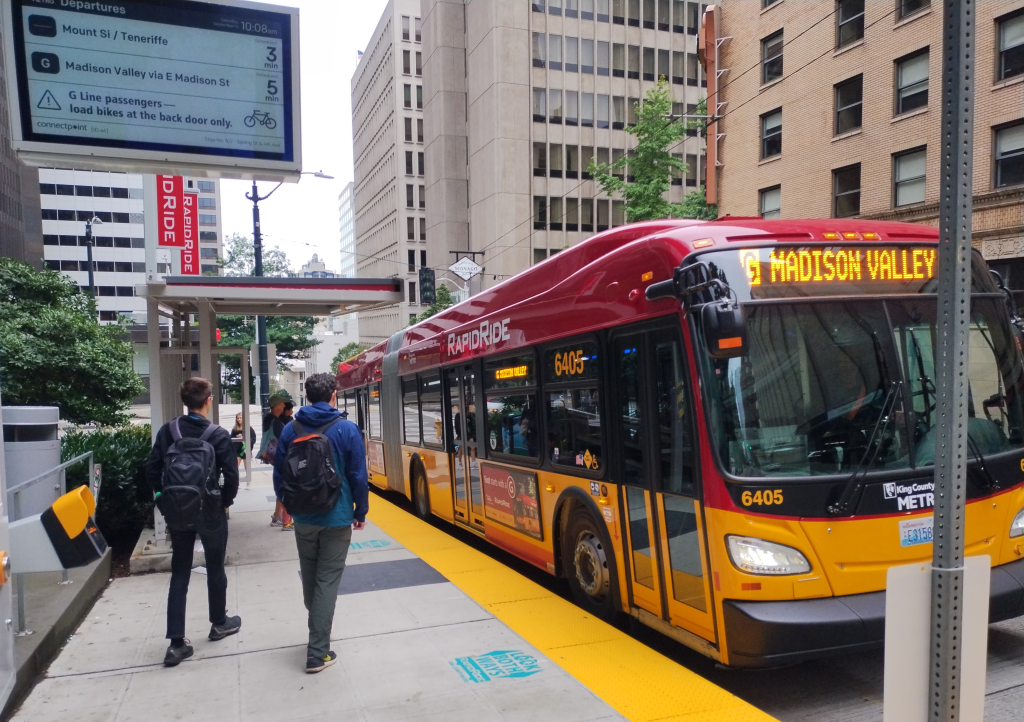
There have also been technical issues with the coaches themselves as they’ve been broken in. As issues with specific coaches arose, Kowalski explained, Metro deployed technicians out to fix issues.
“We had reports of some challenges with the operations of the left door[s],” Kowalski said. “It’s a system that’s designed to be automatic when the coach pulls up to the center island stations, there’s a system on the coach that recognizes that the coach is at these predetermined locations, and automatically opens the left hand doors when they’re needed.”
Then there’s the issue of the signal timing along the corridor, which is controlled by the Seattle Department of Transportation (SDOT). Riders on the G Line will notice the bus is able to zoom between stops thanks to dedicated bus lanes and fewer stops. But the amount of time spent waiting at lights remains a big factor behind bunching buses. Kowalski told The Urbanist that SDOT has been responsive to requests to tweak signal timing, most notably making a significant change to the signal cycle at MLK Way on Tuesday morning that is enabling G Line buses to get to the first stop on the route sooner. But there’s still clearly more work to be done.
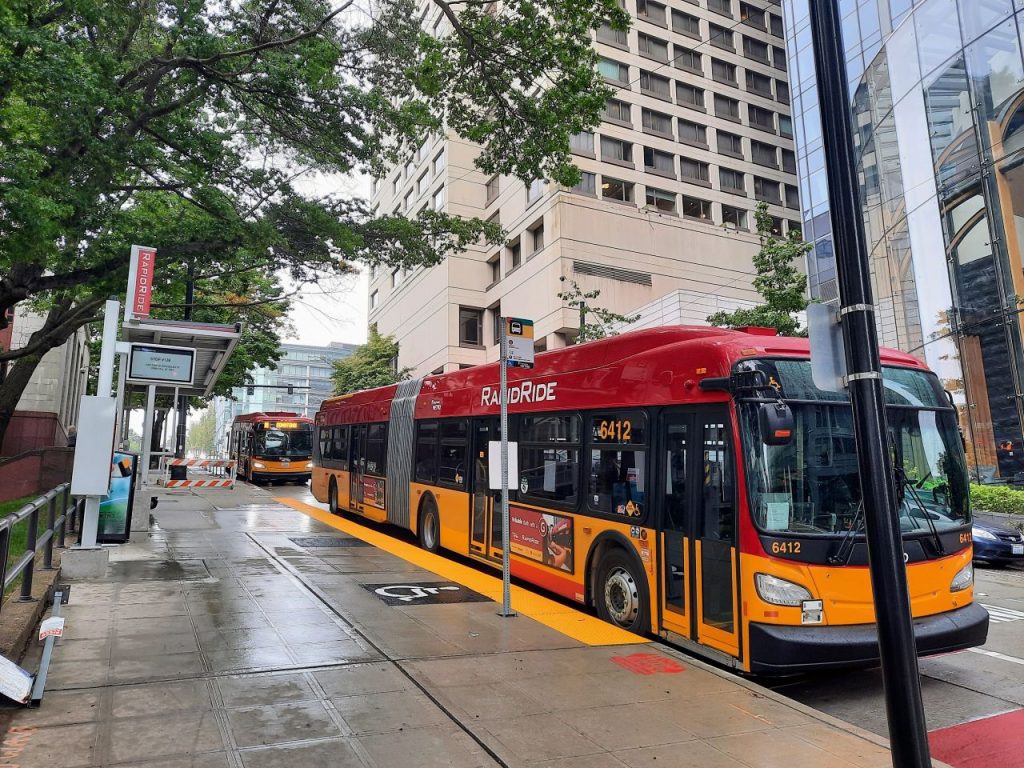
“They make adjustments daily, several times a day,” Kowalski said. “Over the next coming weeks, they’ll be making adjustments to the whole signal system throughout the corridor. So we’re really hoping that that helps smooth out a lot of the bunching and gapping and headway issues.”
The Urbanist has reached out to SDOT for a more in-depth rundown of what is being done to tweak signals to get buses moving faster.
Another issue that riders have encountered at G Line stops are the dynamic departure boards. Currently, the screens display both scheduled trips and real-time projected arrival times, providing riders with information that’s likely to be inaccurate. Kowalski confirmed that Metro is working on pushing out fixes in Metro’s real-time feed so that information at stops is more accurate.
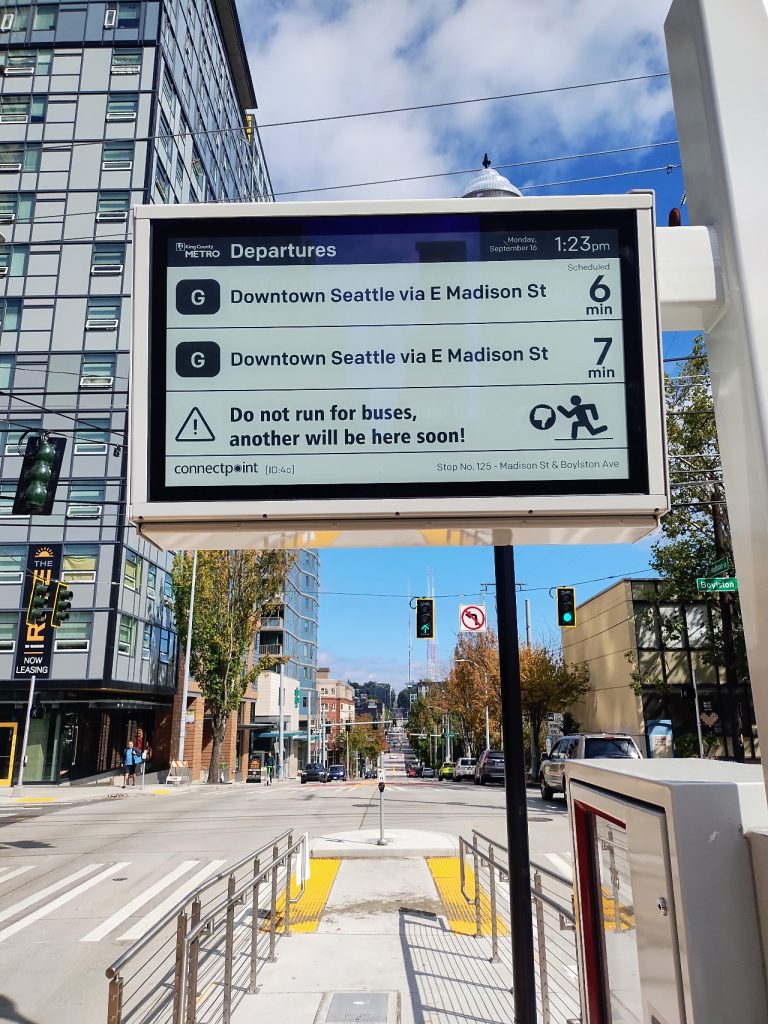
While long waits and limited information at stops are undoubtedly frustrating to riders, all signs point toward G Line operations heading in the right direction.
“Nobody likes bunching. We don’t like it. Passengers don’t like it, the operators don’t like it, but we also don’t like big gaps either, so in having our first line supervisor’s presence out there, we start to reduce the number of incidences where we have gaps or bunching as the operators become more familiar with each individual zone,” Metro’s RapidRide expansion lead Jerry Roberson said.
“It’s not good enough to say that it takes time,” Roberson continued. “But I think it takes this learning curve in these first few days and these first few weeks, to get these kinks worked out so that this can be the type of very frequent corridor that it was designed to be, and to operate the way it was designed to operate.”
Ryan Packer has been writing for The Urbanist since 2015, and currently reports full-time as Contributing Editor. Their beats are transportation, land use, public space, traffic safety, and obscure community meetings. Packer has also reported for other regional outlets including BikePortland, Seattle Met, and PubliCola. They live in the Capitol Hill neighborhood of Seattle.

